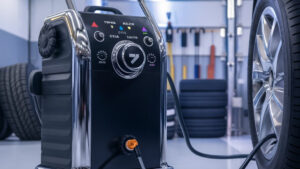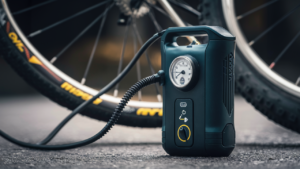The Drone Survival Guide offers essential tips for navigating drone emergencies. It provides practical advice on recovery techniques and safety measures.
Drones have transformed how we capture moments, conduct surveys, and deliver goods. Yet, they come with challenges that every operator should understand. The Drone Survival Guide equips users with knowledge to handle unexpected situations effectively. Whether you’re a hobbyist or a professional, knowing what to do in emergencies can save your equipment and ensure safety.
This guide covers everything from battery management to emergency landings, making it a valuable resource for anyone using drones. Mastering these skills will enhance your flying experience and boost your confidence in the sky. Stay prepared and informed to keep your drone adventures enjoyable and safe.
Introduction To Drone Flying Safety
Understanding drone flying safety is essential for all pilots. Safe operations protect people and property. It also enhances the flying experience. This section explores safety’s importance and the risks of careless flying.
Importance Of Safe Drone Operation
Safe drone operation is crucial for several reasons:
- Protect Lives: Drones can cause serious injuries.
- Avoid Property Damage: Crashes can damage homes and vehicles.
- Legal Compliance: Follow laws to avoid fines.
- Reputation: Safe flying builds trust with the community.
Responsible flying ensures a positive image for all drone users. It encourages others to respect drone technology.
Potential Risks Of Irresponsible Flying
Irresponsible flying can lead to various risks:
| Risk | Description |
|---|---|
| Accidents | Drones can collide with people or objects. |
| Legal Issues | Violating laws can lead to fines or penalties. |
| Loss of Equipment | Carelessness can result in losing your drone. |
| Public Backlash | Negative experiences can turn people against drones. |
Understanding these risks helps pilots fly responsibly. Each pilot should prioritize safety at all times.
Choosing The Right Drone
Choosing the right drone is crucial for a successful experience. The right drone meets your needs and fits your skills. Understand different features before making a purchase.
Factors To Consider Before Purchase
Many factors affect your decision. Here are key points to consider:
- Budget: Determine how much you can spend.
- Purpose: Define what you want to use the drone for.
- Flight Time: Check the battery life for longer flights.
- Camera Quality: Look for high-resolution cameras for better photos.
- Range: Consider how far the drone can fly from the controller.
- Durability: Choose a robust model for outdoor use.
- Ease of Use: Beginners should select user-friendly models.
Understanding Different Types Of Drones
Different drones serve various purposes. Here’s a simple breakdown:
| Type of Drone | Best For | Key Features |
|---|---|---|
| Camera Drones | Aerial Photography | High-quality cameras, stabilization features |
| Racing Drones | Speed and Agility | Fast, lightweight, responsive controls |
| Toy Drones | Beginners | Affordable, simple controls, low durability |
| FPV Drones | Immersive Experience | First-person view, real-time feedback |
| Industrial Drones | Commercial Use | Advanced sensors, long flight times, robust |
Choose the type that matches your needs. Understanding these types will help you make a smart choice.
Pre-flight Preparations
Preparing for a drone flight is crucial. Proper preparations ensure safety and success. This section covers essential checks and weather considerations.
Essential Pre-flight Checks
Before taking off, conduct these essential checks:
- Battery Level: Ensure the battery is fully charged.
- Propellers: Inspect for damage and secure them tightly.
- Camera: Clean the lens for clear images.
- GPS Signal: Wait for a strong signal before flight.
- Firmware Updates: Check for the latest updates.
- Flight Mode: Set the drone to the correct mode.
| Check Item | Status |
|---|---|
| Battery Level | ✔️ Fully Charged |
| Propellers | ✔️ Secure |
| Camera Lens | ✔️ Clean |
| GPS Signal | ✔️ Strong |
| Firmware | ✔️ Updated |
| Flight Mode | ✔️ Correct |
Weather Considerations For Drone Pilots
Weather can affect your drone flight. Always check conditions before taking off.
- Wind Speed: Avoid flying in high winds.
- Rain: Drones are not waterproof.
- Temperature: Extreme temperatures can affect battery life.
- Visibility: Ensure clear skies for safe flying.
- Check the local weather forecast.
- Look for wind advisories.
- Consider nearby obstacles.
- Plan for sudden weather changes.
Mastering The Controls
Mastering your drone’s controls is essential for safe flying. Understanding the basic and advanced maneuvers helps you gain confidence. The right skills ensure fun and successful flights.
Basic Maneuvers For Beginners
Start with simple controls. Focus on these basic maneuvers:
- Takeoff: Gradually increase throttle to lift off.
- Landing: Slowly decrease throttle until touchdown.
- Hovering: Maintain altitude using small throttle adjustments.
- Turning: Use the yaw control to spin the drone.
Practice these steps in an open area. Avoid obstacles to minimize risks. Keep your eyes on the drone at all times.
Advanced Controls For Experienced Pilots
Once comfortable with basics, explore advanced controls. These skills enhance your flying experience:
- Flips: Execute aerial flips with precise throttle control.
- Waypoints: Program specific routes for autonomous flying.
- FPV Flying: Use a first-person view for immersive experiences.
- Camera Control: Adjust settings for better aerial photography.
Mastering these advanced controls takes time. Regular practice is key. Join local flying groups to learn from others.
| Control | Description | Skill Level |
|---|---|---|
| Takeoff | Lift off by increasing throttle. | Beginner |
| Landing | Touch down by decreasing throttle. | Beginner |
| Flips | Aerial flips with controlled thrust. | Advanced |
| Waypoints | Set routes for automated flying. | Advanced |
Focus on mastering controls. Enjoy flying safely and creatively.
Understanding Airspace Regulations
Airspace regulations are crucial for drone pilots. They help ensure safety and prevent accidents. Knowing these rules keeps everyone safe, including you.
Navigating Legal Restrictions
Each country has unique laws for drone operations. Familiarize yourself with these legal restrictions:
- Register your drone if required.
- Follow altitude limits for flying.
- Adhere to flight distance rules.
Check with local aviation authorities for updates. Stay informed about changes in regulations. This helps avoid legal issues.
No-fly Zones And Privacy Concerns
No-fly zones are areas where drones cannot operate. These include:
| Area | Reason |
|---|---|
| Airports | Prevent accidents with manned aircraft. |
| Military Bases | Maintain national security. |
| Crowded Areas | Protect public safety. |
Respect privacy concerns. Avoid flying over private properties without permission. This builds trust within the community.
- Ask for consent before flying over homes.
- Be aware of local privacy laws.
Understanding airspace regulations helps you fly safely and responsibly.
Dealing With Emergencies
Emergencies can happen anytime while flying your drone. Being prepared is crucial. Understanding what to do can save your drone and keep you safe.
Common Drone Malfunctions
Knowing common malfunctions helps in quick troubleshooting. Here are some frequent issues:
| Malfunction | Possible Causes | Immediate Actions |
|---|---|---|
| Loss of Signal | Interference, low battery | Try to regain control, land safely |
| Battery Failure | Overheating, aging battery | Monitor battery levels, land ASAP |
| Motor Failure | Debris, wear and tear | Check motors, land immediately |
Always check your drone before flying. Regular maintenance reduces malfunctions.
Emergency Response Protocols
Have a plan for emergencies. Follow these steps for a quick response:
- Stay Calm: Panic can lead to mistakes.
- Assess the Situation: Identify the problem.
- Activate Fail-Safe Mode: Most drones have this feature.
- Land Safely: If possible, land the drone in a safe area.
- Document the Incident: Take notes for future reference.
Practice these protocols regularly. Familiarity with emergency procedures builds confidence.
Equip your drone with a first aid kit for emergencies. Include basic tools and spare parts. This preparation ensures a quick fix in critical moments.
Maintaining Your Drone
Proper maintenance keeps your drone in top shape. Regular care enhances performance and extends lifespan. Follow these tips for effective drone maintenance.
Routine Inspection And Care
Routine inspections are crucial. Check your drone regularly for any issues.
- Battery: Inspect for swelling or damage.
- Propellers: Look for cracks or chips.
- Frame: Ensure it is not bent or broken.
- Camera: Clean the lens and check for loose connections.
Use the following checklist for routine inspection:
| Item | Inspection Frequency |
|---|---|
| Battery Condition | Before every flight |
| Propeller Condition | Before every flight |
| Frame Integrity | Weekly |
| Camera Cleanliness | After each flight |
Troubleshooting Common Issues
Identifying problems quickly is essential. Here are common issues and solutions.
- Drone Won’t Start:
- Check battery charge.
- Inspect power connections.
- Loss of Signal:
- Move closer to the drone.
- Check for interference from objects.
- Drifting During Flight:
- Calibrate the drone.
- Inspect the GPS settings.
Keep these tips handy for quick fixes.

Ethical Drone Usage
Using drones comes with great responsibility. Pilots must follow ethical guidelines. Respecting the environment and people’s privacy is crucial. Doing so helps maintain harmony in communities.
Respecting Privacy And Wildlife
Drones can easily invade personal space. Always consider where you fly. Avoid flying over private properties without permission.
- Seek consent before filming or photographing people.
- Stay away from residential areas.
- Be mindful of wildlife habitats.
Wild animals can be disturbed by drone noise. Flying too close can scare them. Follow these guidelines:
- Keep a safe distance from wildlife.
- Avoid nesting areas.
- Use drones responsibly in natural settings.
Promoting Responsible Community Engagement
Engaging with your community is vital. Share your drone plans openly. This builds trust among residents.
| Action | Benefit |
|---|---|
| Inform neighbors about your drone usage | Reduces misunderstandings and concerns |
| Attend local meetings | Encourages dialogue and feedback |
| Collaborate on community projects | Strengthens relationships and support |
Responsible engagement fosters a positive atmosphere. Always be open to questions and concerns. Your actions create a safer environment for everyone.
Enhancing Your Skills
Improving your skills with drones is vital for survival. Mastering flying techniques and understanding your equipment can make a difference. Let’s explore resources to enhance your drone skills.
Training Resources And Courses
Many training resources and courses are available online. These help you learn and practice effectively. Here are some popular options:
- Online Courses: Websites like Udemy and Coursera offer drone courses.
- YouTube Tutorials: Channels dedicated to drone flying provide free lessons.
- Local Workshops: Many communities host hands-on workshops.
Consider these important skills to focus on:
| Skill | Description |
|---|---|
| Basic Flight | Learn to control the drone. |
| Navigation | Understand how to read maps and GPS. |
| Camera Operation | Master how to take photos and videos. |
| Safety Protocols | Know the rules for flying drones safely. |
Joining A Community Of Drone Enthusiasts
Connecting with other drone users enhances learning. Communities offer support and share valuable tips. Here’s how to find a community:
- Social Media Groups: Platforms like Facebook have active drone groups.
- Local Clubs: Many cities have drone clubs for enthusiasts.
- Online Forums: Websites like Reddit and DroneForum allow discussions.
Benefits of joining a drone community include:
- Sharing experiences and knowledge.
- Participating in group events and competitions.
- Accessing exclusive resources and discounts.
Enhancing your drone skills builds confidence and improves safety. Engage with resources and communities today.
Capturing Stunning Footage
Using drones can transform your photography and videography. They offer unique perspectives that ground-based cameras cannot achieve. With the right techniques, you can capture breathtaking visuals that tell a story. Here are some essential tips and creative ideas for stunning footage.
Photography And Videography Tips
To make the most of your drone, follow these tips:
- Plan Your Shots: Know your subject and the best angles.
- Use Natural Light: Shoot during golden hour for warm tones.
- Stabilize Your Drone: Use gimbals to reduce shake.
- Adjust Settings: Set ISO, shutter speed, and aperture wisely.
- Practice Composition: Follow the rule of thirds for balance.
Experiment with different heights and angles. This adds depth and interest to your shots. Review your footage often to learn and improve.
Creative Applications For Drone Technology
Drones offer endless creative possibilities:
- Event Coverage: Capture weddings, parties, and festivals from above.
- Real Estate: Showcase properties with stunning aerial views.
- Nature Documentaries: Film wildlife and landscapes from unique perspectives.
- Sports Events: Record thrilling action from high above.
- Art Projects: Create stunning visual art with drone footage.
Use drones in unexpected ways to create engaging content. Think outside the box and let your imagination soar.
Frequently Asked Questions
What Is A Drone Survival Guide?
A drone survival guide offers essential tips for operating drones in challenging situations. It includes advice on equipment, maintenance, and emergency protocols. This guide helps users understand how to respond to unexpected events. With the right knowledge, drone operators can enhance safety and performance during flights.
How Do I Prepare My Drone For Emergencies?
To prepare your drone for emergencies, conduct regular maintenance checks. Ensure batteries are fully charged and firmware is updated. Familiarize yourself with your drone’s emergency features. Create a checklist for pre-flight inspections. Being prepared enhances your ability to handle unexpected situations and ensures safer drone operations.
What Should I Do If My Drone Crashes?
If your drone crashes, first assess the situation for safety. Check for any damage to the drone and surrounding area. If necessary, retrieve the drone and inspect it for issues. Document the crash details for future reference. Always report crashes to local authorities if required.
Can I Fly A Drone In Adverse Weather?
Flying a drone in adverse weather is generally not recommended. High winds, rain, and low visibility can affect flight stability and safety. Always check weather forecasts before flying. If conditions are poor, postpone your flight for safer conditions. Your drone’s performance and your safety should always come first.
Conclusion
Mastering drone survival techniques is essential for any enthusiast. Whether you’re navigating challenges in the field or ensuring your equipment’s longevity, preparation is key. Embrace these strategies to enhance your skills. Remember, practice makes perfect. Stay informed and connected with the drone community for ongoing support and knowledge.
Happy flying!








